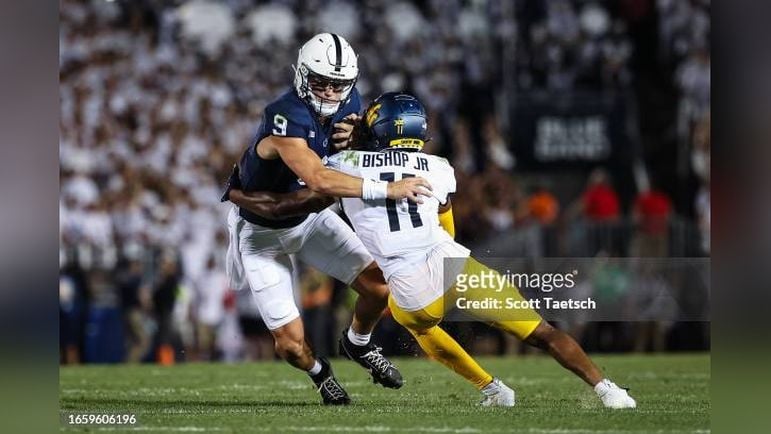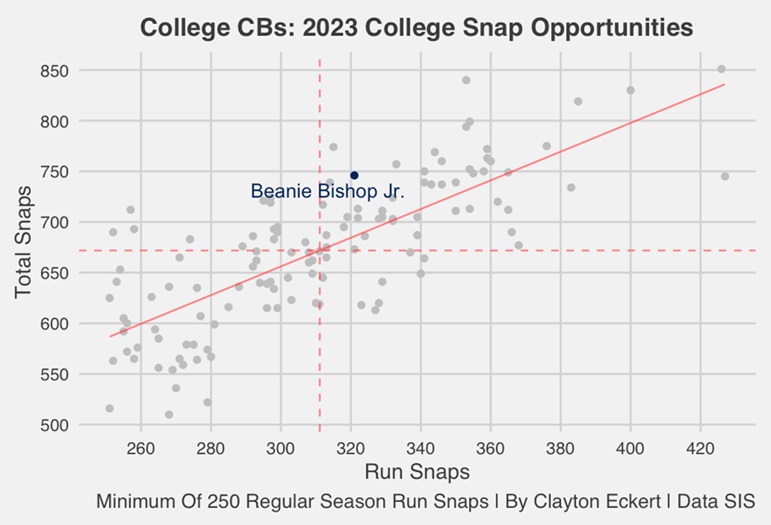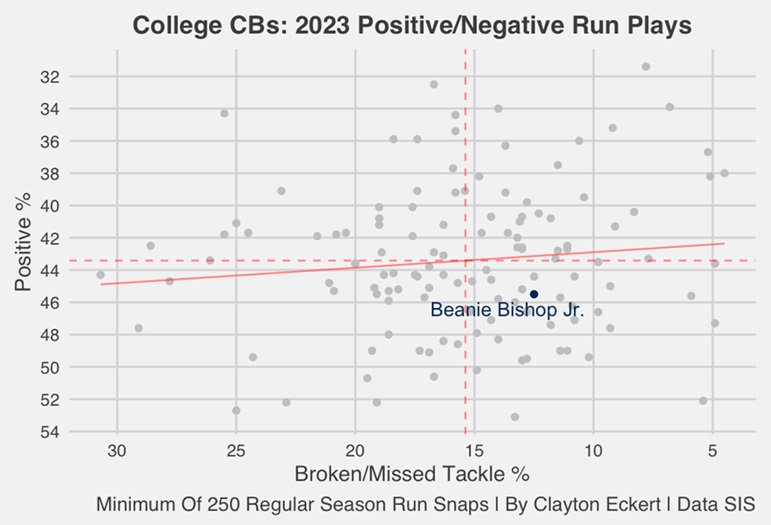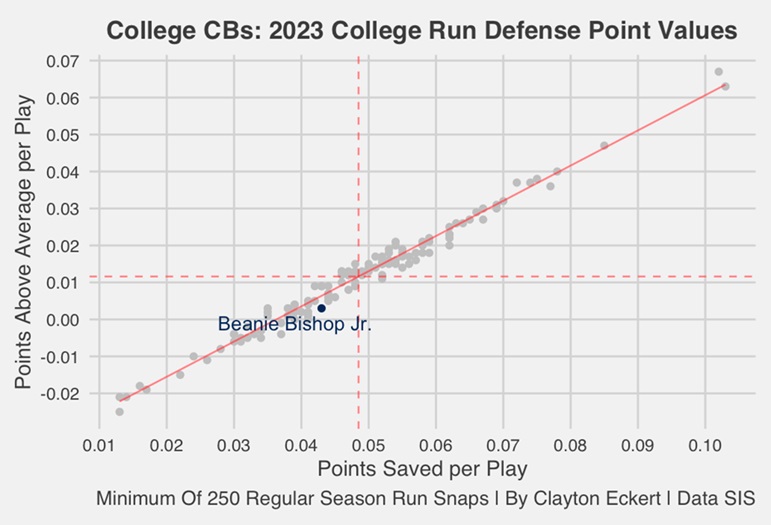Continuing to learn about new Pittsburgh Steelers this offseason, I wanted to look at undrafted rookie cornerback Beanie Bishop Jr. last season in run defense for West Virginia, following up my 2023 coverage stat study on him.
Today, let’s look at and provide some data context from Sports Info Solutions (SIS), including CBs with at least 250 regular season run snaps for comparative context.
Up first, run snaps and total snaps:
In terms of opportunities, Bishop was above the mean among his 126 qualifying peers at the position. His 746 total snaps ranked 20th but played against the run less in comparison (321 run snaps), which tied for 50th. The latter was still above average, but we see that Bishop faced the run less in his playing time.
Next, let’s look at a very important aspect of being a quality run defender – tackling. The chart below looks at the players tackles per game and average tackle depth:
Here we see a very strong 5.3 tackles per game for Bishop, tying for tenth-best among qualifiers. His 3.2 average tackle depth fell below the mean though, tying for 83rd out of 126 qualifiers.
Pre-snap alignment is an important part of the equation to tackle depth and whether a CB played outside or in the slot more frequently. Bishop was primarily an outside corner in 2023 with 694 wide snaps, compared to his second-highest snap count coming in the box at 62.
Bishop played further from the ball at the snap, thus making the average tackle depth more difficult, but that of course applies to many other corners as well. It will be interesting to see how he fares if he earns NFL opportunities, especially considering his lack of size and opportunities in Pittsburgh point to a slot CB role being the more likely path to playing time.
This next view attempts to weigh positive and negative plays, using broken and missed tackle rates (negative plays) along with SIS positive play rate which is the rate of run plays with the player on the field resulted in a positive expected points added (EPA), with lower percentages being the best:
The good news for Bishop was being an above the mean run tackler, posting a 12.5 broken/missed tackle rate that tied for 35th among his peers, which definitely helps his case and hopes to make Pittsburgh’s roster. A 45.5 positive percentage when on the field for the Mountaineers was well below the mean though, tying for 87th. So, Bishop was a plus tackler within a less-than-ideal team run defense.
To close, here is a more total view of the players in the run game:
- Points Saved per Play: The total of a player’s EPA responsibility on run plays using the Total Points system that distributes credit among all players on the field for a given play, with positive numbers being good. Totals are scaled up to map to the average points scored or allowed on a team level, with the player’s snap count determining how much to adjust. For run defense, that includes accounting for defenders in the box, blown blocks forced, broken tackles, turnovers, and turnover returns.
- Points Above Average per Play: using the same Total Points system and putting a number to their value above an average level player:
In this final view, we see Bishop landed below the mean in the data points. He tied for 82nd in points saved per play, and 91st in points above average per play. To wrap a bow on the article, here are Bishop’s ranks in all of the data out of the 126 qualifying CBs:
Tackles per game (T-tenth), total snaps (20th), broken/missed tackle rate (T-35th), run snaps (T-50th), points saved per play (T-82nd), average tackle depth (T-83rd), positive percentage (T-87th), and points above average per play (T-91st).
Bishop was encouragingly strong in some important individual metrics, including availability and quality and quantity as a run tackler. Particularly encouraging is his top-ten rank in tackles per game given lower rank in run snaps (T-50th), along with his solid broken/missed tackle rate (T-35th).
Bishop’s average tackle depth was lower, but would likely move to slot corner at the next level if things pan out, which makes that number less concerning. The discouraging outcomes were largely on a team level, with several factors outside of individual play factoring into the equation. Still important context, but makes the quality and quantity of Bishop’s 2023 run defense even more encouraging and impressive.












